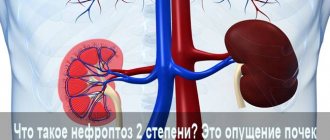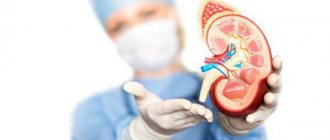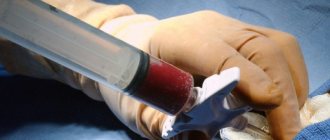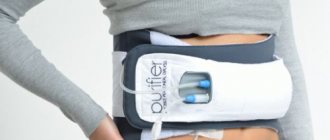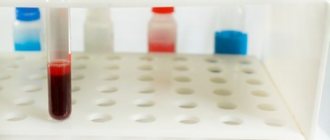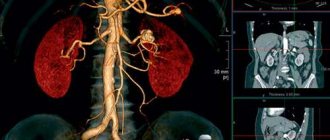Many patients, as soon as their kidneys begin to bother them, try to relieve the pain by warming them up. Is it possible to heat the kidneys during pain, will this bring negative consequences? This folk method is not always recommended; for inflammatory and some other diseases, you will only worsen the situation.
The main filter of the human body is the kidneys, through which blood plasma passes. It turns into urine, which removes excess mineral salts and nitrogenous waste. If a person has certain kidney diseases, they will make themselves felt with a number of symptoms. One of them is pain. Many people try to get rid of it in a proven folk way - by applying a heating pad or warming up the lower back in some other way.
Indications for kidney warming
If you experience pain in the lumbar region from time to time or very often, this is a signal that you need to seek help from a specialist. He will order an examination and make a diagnosis. Based on the doctor's conclusion, therapy will be prescribed. Very often, in the absence of any inflammatory processes, the doctor may prescribe warming up the kidneys. It will help alleviate the general condition and reduce pain. The doctor should also tell you how often the kidneys need to be warmed and whether this can be done without the appointment of a qualified specialist. The main indications for warming up the kidneys include:
- Formations in the kidneys that can provoke severe colic. A warm heating pad will help relieve pain. The “heater” must be applied directly to the place where the pain is felt.
- Menstruation can also be manifested by severe pain in the lower back, affecting the kidney area and causing discomfort. You can get rid of them using a heating pad with warm water.
- Urolithiasis often leads to terrible renal colic. They appear due to blockage of the urinary ducts, which causes the most unpleasant sensations in a person. Is it possible to warm the kidneys in this case? It is possible, but it is better to apply the heating pad closer to the spine.
Warming the kidneys is indicated only in the above cases. Any other complaints should immediately force the person to seek qualified help.
What effect does heat have on the kidneys?
Thermal procedures in some cases bring the expected results. Under the influence of heating, a number of positive changes occur in the organ:
- metabolic processes are activated;
- blood supply increases;
- tissues are restored faster;
- cell nutrition improves;
- pain decreases or completely disappears.
And warming up along with the kidneys of the whole body will dilate blood vessels, normalize blood pressure and relieve fatigue.
However, without the necessary tests and examinations, we can only assume that the discomfort is caused by kidney pathology. Their diseases are characterized by the following symptoms:
- More often the pain is unilateral and localized in the upper lumbar region under the ribs.
- Swelling under the eyes that occurs in the morning and goes away in the evening.
- Impaired urine flow, change in color, or presence of blood in it.
Contraindications to kidney warming
Despite many indications, not everyone is allowed to warm their kidneys. The following categories of persons need to limit themselves from such a procedure:
- If your body temperature is elevated, you should absolutely not warm your kidneys. Is it possible to do this when the body temperature is normally not lower than 37? This question should be answered by your family doctor after a full examination.
- In case of severe poisoning, which is accompanied by nausea and vomiting, as well as dizziness and headache, you should not heat the kidneys.
- For problems with the urination process.
- When diagnosing pyelonephritis. Any thermal effect on the source of the disease can only aggravate the situation.
So the answer to the question is whether it is possible to warm the kidneys with pyelonephritis. Any of these conditions is a reason to consult an experienced specialist.
When should you not warm your back?
In most cases, during kidney disease, heating your back is contraindicated, as this can lead to serious problems. For example, when kidney disease is infectious and an inflammatory process begins, heating promotes the proliferation of pathogens. This may lead to sepsis or kidney failure. An increase in temperature during the inflammatory process is normal.
It is worth noting that an increase in temperature to 37 °C is a reason to stop any warming activities.
If you have pyelonephritis or a kidney cyst, you should absolutely not heat your back if you have pain.
When a patient has a cyst, heat can cause it to rupture, and then a trivial procedure of warming up the back can have fatal consequences. Thermal procedures for malignant tumors can accelerate their growth. Patients who have heart problems and hypertension need to be careful. The diagnosis of pyelonephritis is also a contraindication for thermal procedures.
What is the best way to warm your lower back?
Everyone knows the old “grandmother’s” method that helps relieve pain in the kidney area - a rubber heating pad. It is one of the simplest and most accessible items found in almost every home. Today there are also electric heating pads and salt ones.
Special belts have also been invented that are worn on the lower back; they create a “warmer” effect throughout the day. However, the warming procedure must be carried out correctly and safely. Not everyone thinks about this when faced with kidney pain. No one thinks about whether it is possible to warm the kidneys during pain.
A person is guided by a momentary reflex to severe lower back pain and immediately looks for a way to relieve it. This is correct from the point of view of the instinct of self-preservation. But sometimes such actions can lead to undesirable consequences.
The procedure for warming the lower back must be carried out correctly. If a person has kidney pain, is it possible to use heat? Can. You just need to do this following the recommendations.
When is back warming indicated?
Only a qualified doctor can allow you to warm your back when your kidneys hurt. The cause of pain in the kidneys is often an inflammatory process, then heating will aggravate the disease. Most often, heat treatment is indicated for patients with renal colic. In this case, when the stones move along the ureter, they cause severe pain, and heating allows the muscles to relax, which allows the stone to pass more easily.
Warming may also have a beneficial effect if the patient has a benign tumor in this area. When warmed up, tissue relaxes, which promotes the process of urine outflow. Another cause of lower back pain can be menstruation in women. In this case, the lumbar area can be heated, only carefully. It is better to wrap yourself up to keep warm than to increase the temperature.
Is it possible to heat sick kidneys?
Kidney warming should be prescribed exclusively by a family doctor or urologist. Self-medication for such a serious problem is not recommended.
When a person faces a problem with urination, when he is bothered by renal colic and severe pain in the lower back, this may indicate a variety of diseases that need to be diagnosed in a medical facility under the supervision of a doctor.
Therapeutic effects of baths for various kidney diseases
The therapeutic effects of bath procedures are conventionally divided into current and long-term.
The quick effect is to normalize sodium metabolism and remove excess fluid without straining the urinary system.
With fluid retention in the body caused by chronic inflammatory processes in the kidneys, swelling disappeared after 5-6 bath procedures, and clinical urine parameters returned to normal.
At the same time, there is no load on the organs of the urinary system, and potassium ions are not removed from the body during bathing activities.
If you have a kidney cyst, nephrologists do not recommend actively taking a steam bath. Although this neoplasm is benign, it is prone to spontaneous opening. The maximum temperature in the steam room should be no more than 60 degrees, humidity – up to 30%.
Is it possible to go to the bathhouse if you have kidney stones? The nephrologist decides after examining the patient. An ultrasound of the urinary system is required.
If the size of the stones excludes obstruction of the lumen of the ureter, then bathing procedures are allowed, but with the obligatory replenishment of lost fluid.
For large stones, heat exposure is prohibited. Staying in a bathhouse can cause spontaneous movement of stones, blockage of the ureter and lead to emergency surgery.
Thermal procedures also affect the kidneys remotely. This consists of a general improvement in the condition of the body, increased immune defense and a reduction in the frequency of relapses of the disease.
Recommendations from a urologist for kidney pain
Is it possible to warm the kidneys with a heating pad? Many urologists will answer this question unequivocally; it is possible in the absence of contraindications. It is also important to take into account the fact that warming must be carried out following certain rules. For example, the water in the heating pad should not be very hot, as this can only make you feel worse and the pain may intensify before you go to the doctor. You should also not apply a heating pad to your naked body. It is better to wrap it in a towel or place a piece of cloth on the heating pad and lie with your lower back on top.
Warming up methods
There are quite a few ways in which you can warm your kidneys. For this, various devices are used, a bathhouse, heating pads.
Often people make devices themselves from scrap materials. Some types of heating pads are most often used, including:
- Rubber. Such heating pads have been known for a long time; they are very easy to use. To use the device, you need to fill it two-thirds with warm water (about 45 °C). Then the heating pad is tightly closed with a lid and wrapped in a dry cloth (for example, a thin towel), after which it can be applied to the lower back.
- Electric. This device is more modern. To use it, you do not need to pour water inside. The device consists of a heating element, which is covered with a special material, and then with a cover.
- Solyanaya. It is very convenient to warm the kidneys with a heating pad with such material inside. It's easy to use. The device heats up on its own after pressing the button located inside. The heating pad contains sodium acetate. Its crystals become one hot mass after starting a chemical reaction with the press of a button.
- DIY heating pad, method No. 1. Many people cannot purchase heating devices due to financial difficulties. But you can make a heating pad yourself. To do this, you need to take a bag made of some natural fabric, and you can use buckwheat, rice or salt as a filler. These products are preheated in a frying pan (dry only). Some people use sand as a filler.
- DIY heating pad, method No. 2. To prepare it you will need a bottle with a capacity of one and a half or two liters. Warm water is poured into it (but not hot, as the bottle will melt). This device is applied to the lower back.
In addition to heating pads, people often use other warming methods. One of them is a coniferous broom. It is heated in a bucket of warm or even hot water, then applied to the body.
Warming ointments are a good remedy. Before using them, you should definitely consult a doctor. One of the most common is a drug based on diclofenac sodium.
In addition to the warming effect, the product also has an analgesic effect. When used, the ointment is applied both to the sore area and around it.
Another common procedure is a warm bath, but this should not be taken if you have pyelonephritis. However, the water should not be hot.
If you have kidney pathologies, you should not take a long bath (maximum 10 minutes). In case of renal colic, water procedures are recommended to be carried out for half an hour. In this case, it is necessary to maintain the same temperature all the time.
To the question whether it is possible to take a bath with the addition of various herbs, the answer is yes. Doctors even recommend using decoctions of chamomile, birch or sage.
Warming up in a bath is also very useful for some kidney pathologies. During this procedure, the destruction of pathogenic microorganisms is significantly accelerated.
At the same time, their waste products are also removed from the body. At the same time, beneficial substances are faster delivered to the organs through the bloodstream. Urea is removed from the body along with sweat.
This all reduces the load on the kidneys. However, you need to remember that steaming with a kidney disease such as pyelonephritis is prohibited.
Additional recommendations for kidney pain
- If the pain has the character of a strong burning sensation in the lower back, you need to reconsider your drinking regimen. A person should drink at least 2 liters of clean water per day. A person suffering from kidney problems, and even more so.
- In addition to warming up with a heating pad, you can take advantage of the privileges of our century and take a warm bath. Warmth will help relieve pain.
- If colic does not go away, and the person has already tried all sorts of methods, you need to take a painkiller tablet: “No-shpu” or “Papaverine”. These drugs are the first prescribed as pain relief for renal colic.
- Infusions based on plants. Burdock is a wonderful folk remedy that has been helping people with pain in the kidneys and diseases of the genitourinary system for many years. You need to brew the plant according to the instructions on the package and also take it according to the instructions.
- Cranberry is another folk remedy for severe lower back pain. It has long been used as a strong anti-inflammatory with a calming effect.
- If none of these remedies and methods gives results, you must call an ambulance and try to get into a comfortable position before it arrives. Typically, renal colic can be relieved by lying on one side or on the stomach.
It is imperative to remember that such a serious problem as a disease of the genitourinary system should not be left without proper attention for even a second. Otherwise, the result may be disastrous. Delayed seeking medical help for kidney disease has more than once ended in grief in medical practice.
How to warm up your kidneys
There are three options for the warming procedure for pyelonephritis: a hot water bottle, a heating pad, a warm bath. For kidney disease, the most optimal warming method is a warm bath. You just need to know when heat is useful for pyelonephritis and what water temperature is needed. If you have menstrual pain, a bottle or heating pad can help; it is important to understand that a heating pad does not follow the curves of the body and cannot guarantee uniform heating of the necessary areas.
Another safe method of warming up is wrapping yourself in a warm shawl or blanket.
Remember: it is better not to treat diseases, but to prevent their occurrence and regularly visit a urologist and gynecologist for consultation.
Causes of cold kidneys
Coldness of the kidneys is a general concept that includes the development of inflammation of the kidney tissue and the addition of a bacterial complication. The main causes of the pathology are hypothermia and the penetration of foreign viruses and microorganisms into the body. The disease also worries people with weakened immune systems who have recently suffered from severe infectious diseases such as tonsillitis, pneumonia, scarlet fever
At the first signs of pathology, it is important to start treating cold kidneys in a timely manner, since there is a high risk of developing severe complications that can cost a person his life
Surgical intervention
If the pathology is not detected in time, complications and a severe course of the disease are possible. Conservative treatment may be ineffective and surgical intervention is required.
In case of suppuration in the kidneys, urgent surgery is performed to prevent infection of other organs. During surgery, the surgeon drains the renal pelvis and dissects necrotic foci.
Surgery is indicated for the formation of cysts or in cases of kidney cancer in women. After the operation, the patient is prescribed a diet and a vitamin complex that will help quickly get in shape and restore health.
It is recommended to take diuretics so that urine does not stagnate in the bladder, does not interfere with healing, and stagnant processes do not provoke a relapse. An important part of the rehabilitation process is a diet that excludes salt, fried and spicy foods.
The patient needs to take medications that contain calcium. With a doctor's prescription, it is allowed to take decoctions and infusions based on medicinal herbs.
How to use a heating pad
Protrusion not only exerts mechanical pressure on neighboring tissues, but also provokes a reflex muscle spasm at the site of the lesion.
The gentle heat relaxes the muscles, relieving tension and tightness. Woolen belts and a heating pad on the lower back create just such a softening effect. The use of higher temperature sources can lead to the opposite effect, that is, cramping, pain and swelling.
As the water cools, the towels can be removed. As a result, you will provide your spine with long-term warmth at a constantly moderate temperature.
Such procedures need to be carried out regularly - every day for three hours. Only in this case will your well-being gradually begin to improve.
Effective treatment methods
If kidney pain in men is severe, the doctor can prescribe antispasmodic medications that relax muscles and relieve pain, for example, “Papaverine”, “Spazmoverine” or “No-shpa”, “Ketonov”, “Veralgan”, “Metamizol” and many other drugs.
While taking antibiotics, if urolithiasis or another disease is detected, the doctor also prescribes a drug that protects the intestinal microflora to prevent dysbiosis.
To reduce the burden caused by new drugs that have a strong effect on the liver, stomach, and kidneys, specialists prescribe antifungal drugs and a diet containing less fermented milk products. Salty, smoked and spicy foods should not be included in your daily diet.
If stones are detected in the kidneys, then conservative treatment must also be undertaken for this. They take medicine that helps break up and remove stones - Urolesan, Fitolit, Fitolysin - these are high-quality drugs containing plant extracts, which give one hundred percent results for urolithiasis.
But if treatment with various drugs does not help, then surgical intervention is required.
The operation is performed if prolapse of the kidneys, cancer, benign tumor, rupture of renal tissue, sometimes with urolithiasis is detected, in order to remove undissolved stones - oxolites.
